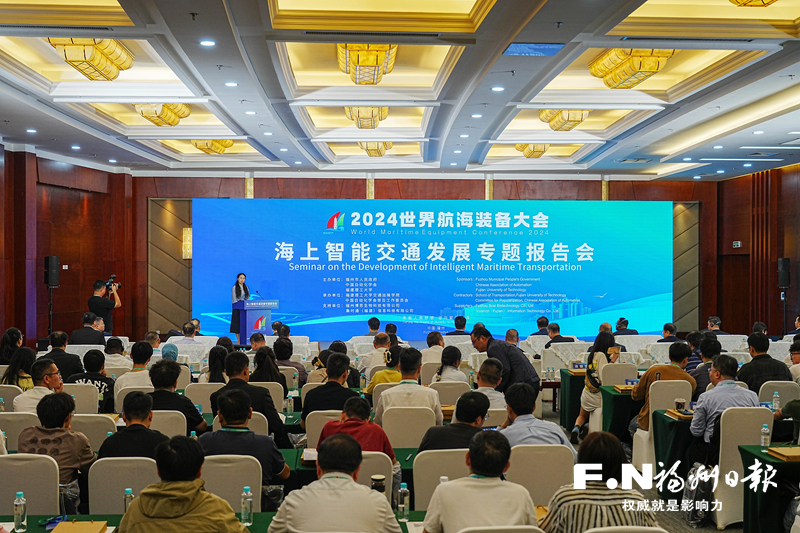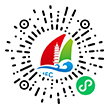The Seminar on the Development of Intelligent Maritime Transportation Was Held
How can smart ships navigate into broader new blue seas?
Smart, eco-friendly new energy ships, underwater bionic unmanned systems derived from the shape of a “fish”, and intelligent unmanned boats that can easily adapt to complex marine environments... On the afternoon of November 15, at the World Maritime Equipment Conference 2024, a special report on the development of smart maritime transportation took place, gathering many elements of intelligence. The event focused on key topics such as smart shipping technologies, automated navigation systems, underwater unmanned technology, and new energy ships, presenting a beautiful blueprint for the future of maritime development under the theme of “Smart Navigation for a Bright Future: Co-creating the Future of Maritime Development”.

On-site Picture of Seminar on the Development of Intelligent Maritime Transportation Reporter: Bao Hua / Photography
How can ships navigating on the water achieve a new upgrade in green intelligence? “Accelerating the green transformation of the shipbuilding industry is of great significance for advancing new industrialization and building a beautiful China!” During the keynote speech of the seminar, Xiong Shusheng, a Foreign Member of the Russian Academy of Engineering and Researcher at Zhejiang University, demonstrated a brand-new path for intelligent new energy ships to “change lanes and overtake others”, covering aspects such as ship design, monitoring and verification, and energy supply.
Intelligent ships are defined as vessels that integrate advanced information technology, automation technology, artificial intelligence, big data analysis, the Internet of Things (IoT), and other technologies to achieve higher levels of intelligence and automation in areas such as autonomous navigation, automatic driving, intelligent monitoring, and optimized scheduling.
“For example, the implementation of IoT technology and intelligent driving technology can greatly enhance the safety and efficiency of ship operations,” said Xiong Shusheng. He explained that by relying on IoT technology, key ship components can be equipped with sensors and devices that collect data on the ship’s status, navigation environment, and equipment operation. This enables autonomous navigation and intelligent driving technology for ships, making each voyage safer and more reliable.
Under a “green net”, intelligent ships will also sail towards broader blue oceans. “In the era of electric shipping, converting oil to electricity is currently the most suitable technological solution for the green transformation of ships. By leveraging technological empowerment, ecological chain integration, and platform services, along with the establishment of new energy ship industry bases, we can break through the current bottleneck!” said Xiong Shusheng.
After learning about intelligent new energy ships, the participants, led by Yu Junzhi, Distinguished Professor at Peking University, moved on to explore the mysterious “Fish World” and experience the innovations in underwater bionic unmanned system construction.
“Our marine science and technology innovation efforts are entering the fast lane. Underwater submersibles are powerful tools for ocean development and utilization, representing a new trend in future ocean development,” introduced Yu Junzhi. He explained that the underwater bionic research, centered around the “Four New” goals - new concepts, new drives, new structures, and new functions - provides a controllable verification platform for studying propulsion mechanisms in fish and cetaceans and offers new ideas, methods, and technologies for the design and control of underwater bionic vehicles.
The latest research progress on highly maneuverable bionic robotic fish, surface cleaning robot systems, and visual crawling fish reveals the next step for robots in the “underwater battlefield”: openness, scenarios, and ecology.
“We will accelerate frontier explorations in bionic amphibious cross-medium technologies while accelerating practical applications such as gripper operations and underwater waste collection. With more precise, refined, and intelligent research, we will create a new chapter in science and technology leading the future!” said Yu Junzhi.
Marine unmanned systems are crucial support equipment for the strategy of becoming a maritime power. In the vast “blue living room”, unmanned boats cutting through the waves have become important members of the “maritime fleet” that China is accelerating to build.
Focusing on three key dimensions - autonomous control, swarm coordination, and intrinsic security - Xie Shaorong, Dean of the School of Computer Engineering and Science at Shanghai University, gave an impressive presentation.
“Autonomy, intelligence, and reliability are the key priorities for our current research on unmanned boats,” Xie Shaorong said. Autonomous control is the core of unmanned technology. In recent years, through methods such as online modeling and intelligent control, unmanned boats have made continuous breakthroughs in key technology research, system optimization, and field application testing, enabling efficient autonomous operations and safe coordination in complex marine environments.
The spark of innovation continues to emerge through easy-to-understand corporate presentations and high-level dialogues between government, industry, academia, and research. On-site, government officials from countries like Syria, Turkey, and Yemen, along with high-level representatives from cutting-edge enterprises and scholars, shared their insights on the practical application of cutting-edge technologies such as artificial intelligence, big data, and the Internet of Things in the maritime field. The vigorous momentum for green and sustainable maritime transportation development is rapidly converging at this “Grand Blue Ocean Event”.
(Reporter: Sun Man / Text, Bao Hua / Photography)







